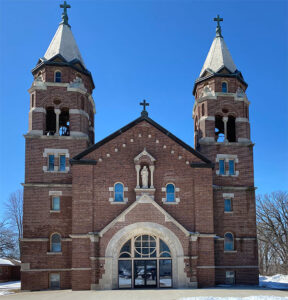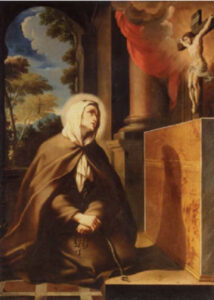Location
St. Margaret Catholic Church
Lake Henry, MN
Map
Our History
 The Lake Henry area, as with much of Stearns County, experienced an influx of German settlers in the early 1850’s. The Indian Missionary Father Francis Xavier Pierz served the first settlers, but there soon became to many and more priests were needed. In 1856, the Sons of St. Benedict established a community to serve the area, now St. John’s Abbey in Collegeville. With an increasing number of settlers in the area, local Benedictan priests began supporting the organization of parishes.
The Lake Henry area, as with much of Stearns County, experienced an influx of German settlers in the early 1850’s. The Indian Missionary Father Francis Xavier Pierz served the first settlers, but there soon became to many and more priests were needed. In 1856, the Sons of St. Benedict established a community to serve the area, now St. John’s Abbey in Collegeville. With an increasing number of settlers in the area, local Benedictan priests began supporting the organization of parishes.
In 1880 families in the Lake Henry area gathered in the home of Michael Kraemer Sr. and began plans for a church. The request was approved and the congregation was officially established in fall 1881. Michael Kraemer Sr. worked vigorously to establish the church, and is considered its founder. In fact, the patroness St. Margaret was chosen in honor of Kraemer Sr.’s wife Margaret.
Our Patron Saint
 Saint Margaret of Antioch is a virgin and martyr. Her father was a pagan priest. Her mother died soon after Margaret’s birth, so she was nursed by a pious Christian woman. Having embraced Christianity and consecrated her virginity to God, she was disowned by her father and adopted by her nurse.
Saint Margaret of Antioch is a virgin and martyr. Her father was a pagan priest. Her mother died soon after Margaret’s birth, so she was nursed by a pious Christian woman. Having embraced Christianity and consecrated her virginity to God, she was disowned by her father and adopted by her nurse.
One day, while she was engaged in watching the flocks of her mistress, a lustful Roman prefect named Olybrius caught sight of her, and attracted by her great beauty sought to make her his concubine or wife. When neither bribery nor threats of punishment could succeed in moving her to yield to his desires, he had her brought before him in public trial at Antioch. Threatened with death unless she renounced the Christian faith, the holy virgin refused to adore the gods of the empire. An attempt was made to burn her, but the flames left her unharmed. She was then bound hand and foot and thrown into a cauldron of boiling water, but her bonds were broken and she stood up uninjured. Finally the prefect ordered her to be beheaded. The events surrounding her execution were rumored to lead to the conversion of thousands of spectators.
Map

